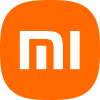It gets even more complicated as different ISP's may use the same model. In Singapore, both Starhub and My Republic sell the HB710. On the TP-Link Website, it was listed as two separate models HB710 (SH) and HB710 (MR), although that distinction seems to now have been removed on the website. When I bought my HB710 from the Starhub shop at NEX, it was actually labelled as the My Republic version. Has been suggested that perhaps it's because Starhub acquired MR about two years ago, although they still operate separately. So who controls the firmware? Starhub or My Republic?
Who controls the firmware is not actually easy to find out. Unlike Singtel's HB810, where you can find a link to a Singtel page, the HB710 updated its firmware when I first installed it, not even asking me whether I wanted to do it and I don't know where from. It is possible to initiate a firmware upgrade through the web interface, but I have a feeling it was pushed out by the ISP in my case when I turned it on and connected to the internet. But who pushed it out? My Republic, Starhub or perhaps and most likely imho TP-Link.
So why bother with these service provider routers? Its price quite simply. The HB710 is $192. The next cheapest router at retail with two 10Gbps ports is the Archer GE800, which is $699. The HB710 also seems to work well on various ISP's in Singapore and even supports Singtel VLAN. I use the HB710 as an easymesh node and it has been working flawlessly for a month. No disconnects whatsoever. So why not take a chance on a router, which has pretty much all the capability of much more expensive routers at 27% of the price! It also has a 4-year warranty directly from TP-Link, not Starhub, which is one year longer than normal.






